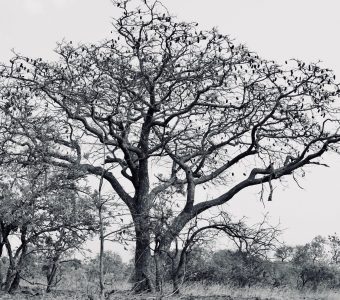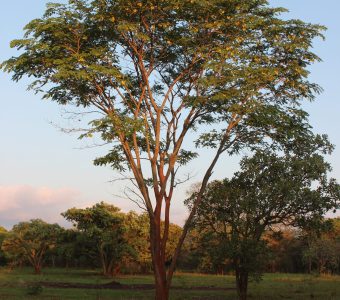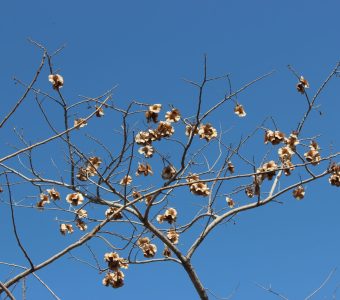



Botanical Name: Pterocarpus angolensis
Common Name: Mukwa, Mulombwa, Mulombe, Mukula, Mlombe
Plant Family: Fabaceae (Legume Family) Papilionoideae
Growth Form, Habitat and Distribution: A medium to large deciduous tree with straight trunk, upward branching giving an open, rounded crown. Occurs throughout Zambia in all woodland types at varying densities. Pterocarpus tinctorius (chrysothrix) is similar but with reddish bark and overlapping leaves.
Size: Height: up to 25m, usually smaller, spread up to 10m.
Bark: Variable grey-brown to black, vertically cracked and ridged with sharp scales. Exudes a crimson sap if damaged.
Leaves: Alternate, compound, imparipinnate, with 5 to 9 pairs of opposite, or sub-opposite, ovate to elliptic-lanceolate leaflets (3 to 8cm), dark green above, paler below, margins wavy, apex tapering to a bristle tip. Petiole 5 to 10cm. Usually leafless for up to 4 months.
Flowers: Showy and fragrant in large, branched terminal spays (up to 20cm) of small, orange-yellow, pea-like flowers, August to October.
Fruit: A characteristic “fried egg” flat, light brown, indehiscent, circular pod (up to 15cm) with a bristly centre maturing the following March to June, but often on the tree longer, with 1 or 2 glossy brown seeds in the hard seed case which is opened by fire and termites.
Uses: The wood is reddish brown around the white sapwood and has been heavily exploited for furniture and then as an export timber. Good timber trees are now denuded in many areas. Has many medicinal properties.
